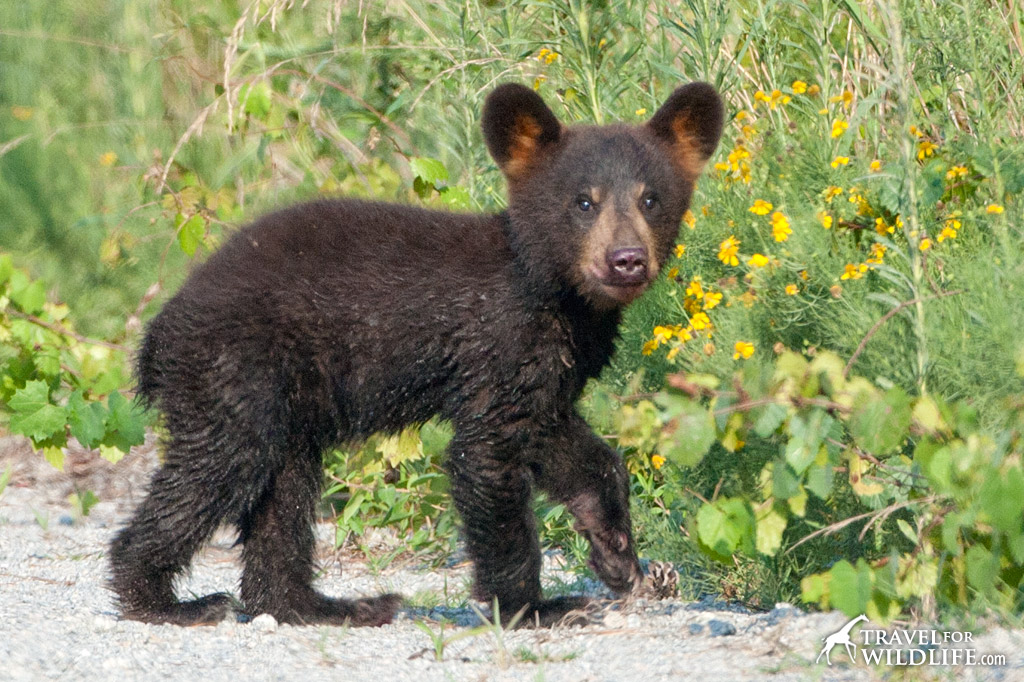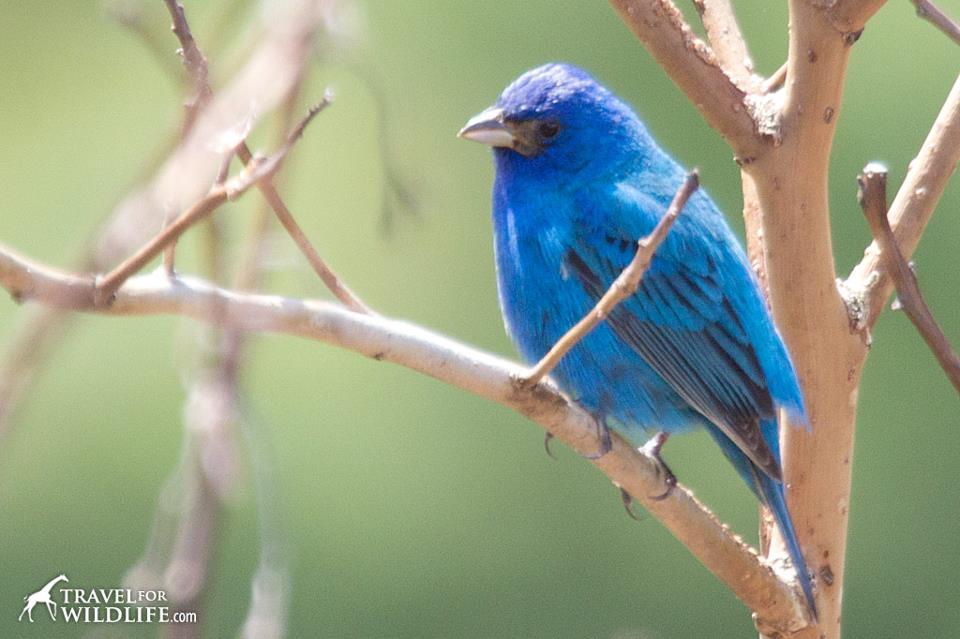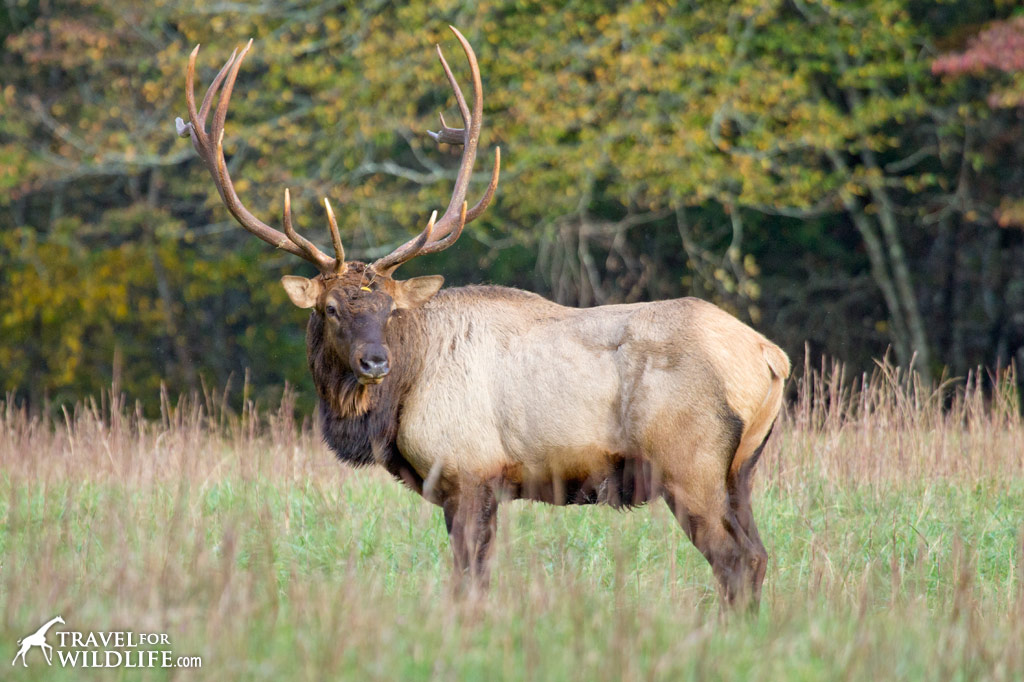Asheville, North Carolina might be known for its breweries and independent restaurant scene, but if you are looking to put some wildlife into your vacation, you’ve come to the right town.
Choose a wildlife attraction in Asheville:
1) Visiting the WNC Nature Center
2) Birdwatching in and around Asheville
3) Visiting the elk in the Smoky Mountains
4) Looking for black bears in the Smoky Mountains
1) Visiting the WNC Nature Center
The Western North Carolina Nature Center is not your usual zoo. You won’t find giraffes or cute lion cubs but you will find plenty of species native to North Carolina. The center only accepts animals that have been injured or confiscated and cannot be released back into the wild. The mission of the WNC Nature Center is to educate visitors about conservation.
A member of the Association of Zoos and Aquariums, the WNC Nature Center takes part in the red wolf Species Survival Plan and is one of the few places in the US where you can see this endangered canid.
Other highlights of a visit to the WNC Nature Center include sneaking a peek at a napping least weasel and hunting under rocks for the astonishing hellbender.
The least weasel is a nocturnal predator and is the world’s smallest member of the order Carnivora.
Also known as the mud puppy or the snot otter, the hellbender is one of the largest salamanders in the world and can grow to be over two feet long. They are very susceptible to water pollution and have been classified as a Species of Concern in various states, including North Carolina.
Never seen one?
2) Birdwatching in and Around Asheville
From warblers to flycatchers, woodpeckers to cuckoos, Western North Carolina is a great destination for bird enthusiasts.
Our friends at Bird Ventures offer many day trips around the Asheville area and the Blue Ridge Parkway.
They also offer longer birdwatching trips to other parts of the US such as Alaska, and some great international trips including South Africa and Ecuador.
3) Visiting Elk in the Smoky Mountains
Around 140 elk (2012 survey) live in the Smoky Mountains. They concentrate around the eastern end of the park, and Cataloochee Valley is the best place to see them. Luckily, this is the closest part of the Smokies to Asheville and can be reached in 45 minutes.
October and November are the high season for watching elk as their antlers are fully grown and the rut is in full swing. The bizarre screeching sounds of bugling bull elk fill every corner of the valley.
For more information about elk seasons, how to get to Calaoochee, and where to stay; visit our post on Elk in the Smoky Mountains.
4) Spotting Black Bears in the Smoky Mountains
Though black bears do occasionally wander right into Asheville, your best chance of spotting one is in the Great Smoky Mountains National Park a couple hours west of town.
The Smoky Mountains have a high density of black bears and at 2 bears per square mile, you are almost guaranteed to see some sign of their presence such as prints or a scat. When hiking in bear country, always be aware of your surroundings and make noise so that bears know where you are. You don’t want to startle them.
If your goal is to see black bears in the Smokies, your best bet is to head to the western side of the park, into Cades Cove. Bears can be sighted anywhere in the park at any time, but Cades Cove offers open fields and a good deal of edge habitat which makes bear viewing far more predictable. The loop road is especially famous for wildlife watching. If you don’t happen to see any black bears, you’re still virtually guaranteed to spot white-tailed deer and turkeys. (Ever wonder what are baby turkeys called?) You might even get lucky and catch a glimpse of a coyote or a bobcat.

Note: It is a 3-hour drive to Cades Cove from Asheville, so plan accordingly.
What is your favorite Asheville wildlife encounter?

Cristina Garcia
Zoologist and wildlife photographer. She has worked in the field with jackals, wolves, cheetahs, & leopards. She serves on the Board of Directors of SEE Turtles, a non-profit sea turtle conservation organization.
Read her posts at Travel For Wildlife and see more of her work at Truly Wild, & Our Wild Yard.






Barbara Weibel
Monday 17th of June 2013
It's fantastic that you can enjoy so much wildlife close to home!
Cristina Garcia
Monday 17th of June 2013
we love it over here!
Charli | Wanderlusters
Sunday 16th of June 2013
Wow, I'd love to see a bear cub in the wild, their paws are huge! However I'm sure a turkey sighting would suffice, their feathers look almost as fancy as a peacock's, just a little less vibrant!
Cristina Garcia
Sunday 16th of June 2013
Who would've thought turkeys would be this beautiful, right? Love them